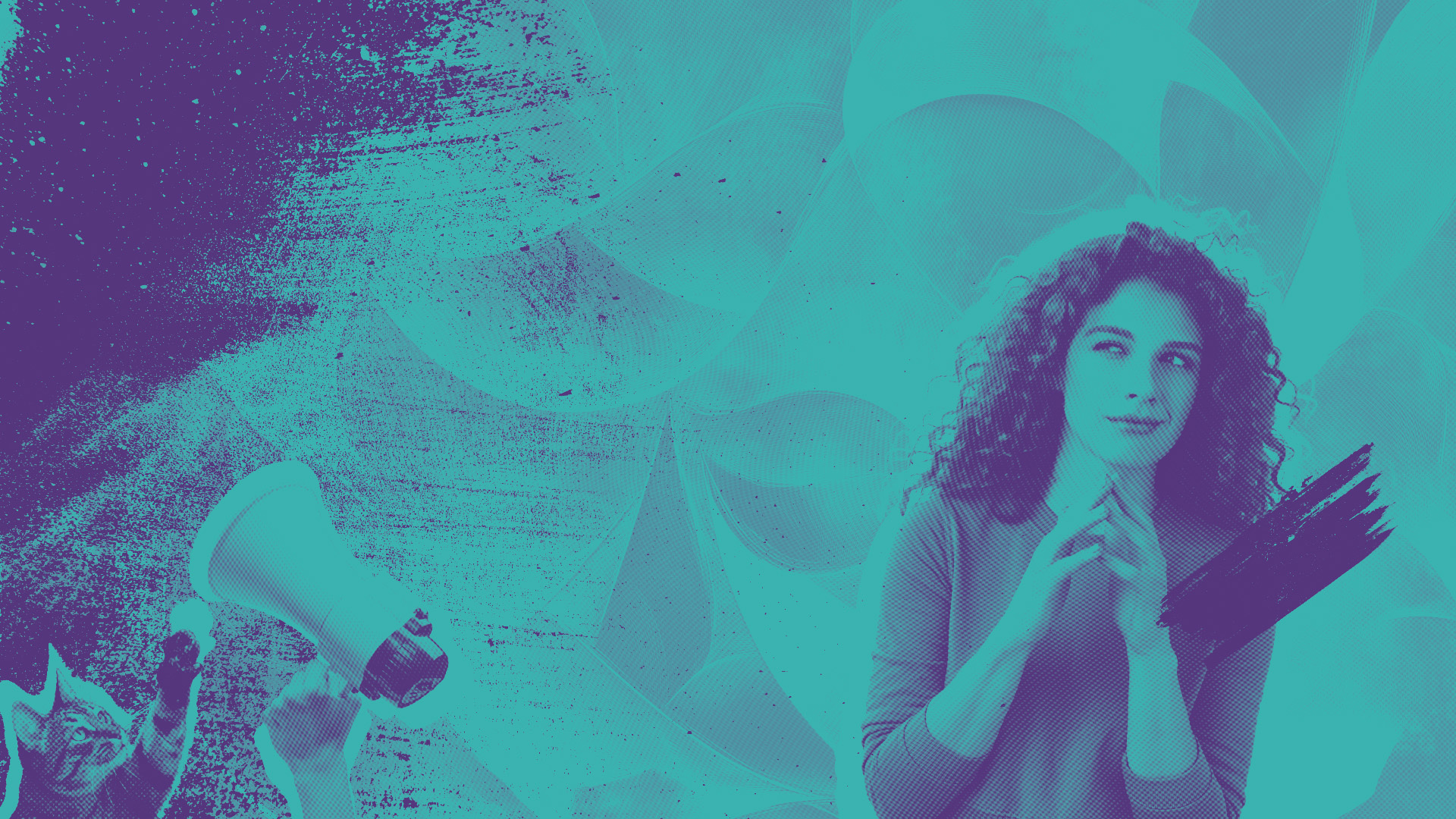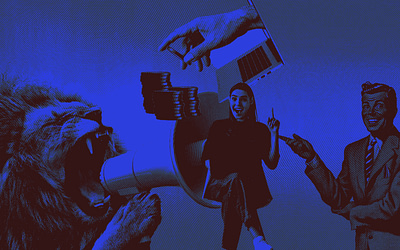Table of contents
Curiosity is hardwired into human nature. It’s a cognitive itch, compelling us to seek answers and resolve ambiguity. This psychological trait is rooted in our brain’s reward system, which releases dopamine—a chemical linked to pleasure and motivation—when we discover new information. In marketing, this translates into an irresistible opportunity: if you can spark curiosity, you can drive your audience to take action, whether it’s clicking an ad, opening an email, or exploring a product.
The curiosity gap—a term popularised by journalist George Loewenstein—explains this phenomenon. When people sense a gap between what they know and what they want to know, they become motivated to bridge it. Performance marketers can capitalise on this by teasing just enough information to pique interest while withholding enough to encourage deeper engagement.
How curiosity shapes decision-making and engagement in a digital context
In today’s digital-first world, attention spans are fleeting. On platforms saturated with ads, posts, and notifications, curiosity can be the key differentiator that makes your message stand out. Research shows that curiosity not only increases engagement but also fosters more deliberate decision-making. When users are intrigued, they spend longer engaging with content, exploring options, and considering their next steps.
For example, ambiguous headlines like “You Won’t Believe What Happened Next” or “Discover the Hidden Secret Behind X” are designed to spark intrigue. When paired with compelling visuals or interactive elements, such techniques can dramatically boost click-through and engagement rates. Digital campaigns that tap into curiosity benefit from increased dwell time, a crucial metric in optimising algorithms for platforms like Facebook and Google.
The link between psychological triggers and marketing success
Performance marketing thrives on psychological triggers, and curiosity is among the most potent. Unlike other motivators, such as urgency or exclusivity, curiosity appeals to a deeper cognitive process. It doesn’t just prompt an immediate reaction—it also builds an emotional connection between the audience and the brand.
Curiosity-driven campaigns are versatile. They can be used to generate awareness, drive conversions, or build loyalty. Whether you’re using curiosity to unveil a new product, promote a webinar, or engage users with interactive content, the underlying principle remains the same: you’re inviting your audience to take the next step in their journey, rewarding their curiosity with value.
The art of crafting headlines and captions that intrigue but don’t over-reveal
Crafting ad copy that teases just enough to spark interest is both an art and a science. Effective curiosity-driven headlines balance providing valuable information with leaving something unsaid. Phrases like “The secret to…” or “What you didn’t know about…” create an information gap that nudges readers to click or engage further.
Ambiguity works because it activates the audience’s desire for closure. When carefully implemented, it keeps users intrigued without frustrating them with too little detail. For example, instead of a headline like “Our product is the best for weight loss,” a curiosity-driven version might read, “This simple daily habit is transforming weight loss—find out how.”

Balancing mystery with clarity to maintain trust
While teasing information can drive clicks, it’s crucial to avoid misleading your audience. Overpromising or using clickbait tactics that fail to deliver on the intrigue can harm your brand’s reputation and erode trust. The key is to ensure that the content delivers real value once the curiosity is satisfied.
For instance, if an ad promises “a surprising way to boost sales,” the follow-through must genuinely reveal an actionable strategy. Audiences are more likely to stay engaged when their curiosity is rewarded with authenticity and relevance. This balance between mystery and clarity not only sustains trust but also fosters long-term loyalty.
Examples of ambiguous yet persuasive messaging strategies
Ambiguity in ad copy can take various forms, each designed to engage different audience preferences and platforms. Open-ended questions are a popular choice, as they encourage users to imagine the possibilities. For instance, an e-commerce campaign might use “What’s the one wardrobe staple every professional needs?” to prompt clicks on a product showcase.
Another effective approach is using suggestive but incomplete statements. A brand promoting a digital marketing webinar could write, “This one strategy doubled our client’s leads in 30 days—learn how it can work for you.” The incomplete nature of the statement leaves the audience eager to learn more, driving conversions without revealing too much upfront.
Sparking curiosity visually
Visual ambiguity can be a powerful tool in performance marketing, particularly when used to intrigue and engage audiences. Subtle design choices like partial image reveals, blurred sections, or hidden elements prompt users to interact and uncover more. These techniques work by appealing to the brain’s natural curiosity about what lies beyond the visible.
For instance, a social media ad featuring a blurred-out product with the text “Coming Soon: Our Most Innovative Design Yet” generates anticipation. Similarly, a carousel ad where the final image contains the full reveal encourages users to scroll through, increasing interaction and dwell time. These design elements not only make content visually appealing but also strategically guide user behaviour.
Interactive ads and gamified elements that encourage exploration
Interactive ads that require user input or engagement are particularly effective in creating curiosity loops. Formats like polls, quizzes, or swipeable story elements foster a sense of involvement, making the user eager to participate and discover the outcome. Gamification—such as “Spin the Wheel” or “Unlock the Secret Box”—further amplifies curiosity, as it combines suspense with a tangible reward.
For example, an Instagram Story ad might use a poll with the question, “Which feature do you think we’re introducing next?” Users are naturally curious about whether their guess is correct, motivating them to stay engaged with the brand until the answer is revealed. Interactive elements like these drive not only engagement but also deeper emotional connections with the audience.
Optimising visuals for platforms like Instagram, TikTok, and Facebook
Each platform has its own unique dynamics, and understanding them is key to using curiosity effectively. On Instagram and TikTok, short-form videos that reveal a portion of a story but stop at a cliffhanger work exceptionally well. The “wait for it” or “watch till the end” hook keeps viewers engaged, increasing watch times and boosting algorithmic performance.
Facebook, on the other hand, favours carousel or story ads that allow users to interact progressively. For instance, a fitness brand might showcase a transformation journey, with the “after” image placed at the end of a swipeable carousel. These platforms reward engagement, and by crafting visually intriguing content tailored to each one, marketers can maximise both reach and results.
Email marketing and ambiguity
Email subject lines that embrace ambiguity are proven to pique curiosity and drive open rates. A well-crafted subject line creates intrigue without giving away the content inside, prompting recipients to click out of a need to resolve their curiosity. For example, “You’re Missing This Crucial Update” or “Something Big is Coming Your Way” teases just enough information to spark interest.
Ambiguity works particularly well when combined with personalisation. Adding the recipient’s name or referencing their past interactions heightens the sense of relevance. For instance, “Jane, We’ve Got Exciting News Just for You” feels more compelling and personal, increasing the likelihood of engagement.
Strategies for piquing curiosity without misleading
To keep your email strategy effective, the curiosity sparked by the subject line must be answered within the content. Misleading subject lines—while potentially effective in the short term—damage trust and reduce long-term engagement. Instead, the intrigue should flow naturally into valuable content, creating a satisfying experience for the reader.
Use open-ended questions or numbers to guide curiosity. A subject like “Three Things You Didn’t Know About [Topic]” suggests actionable insights, making it more likely to resonate with your audience. Pair this with an engaging preview text that extends the mystery, and you have a winning formula for high-performing email campaigns.
Social media and the curiosity as the engine of engagement
Social media platforms thrive on bite-sized, curiosity-driven content. Reels and Stories are particularly effective for creating curiosity loops, where users are teased with just enough to keep them hooked. For example, a Story sequence could hint at a major reveal in the last slide, with captions like “Wait for it…” or “You won’t believe the results!” This method ensures viewers stay engaged throughout the content.
Polls and quizzes amplify this effect by inviting participation. A poll like “Guess what feature we’re launching next?” not only stirs curiosity but also fosters interaction. These tools work as two-way conversations, making your audience feel involved while subtly building anticipation for the reveal.
The power of “watch until the end” hooks in video content
Video content that uses hooks like “watch until the end” creates a sense of suspense, compelling users to stay engaged longer. TikTok and Instagram are perfect platforms for such content, where the promise of a dramatic reveal or key insight at the conclusion keeps viewers glued. For example, a fitness brand might create a reel showcasing a workout routine, with the promise, “The most effective move is at the end!”
This technique not only boosts watch times but also improves platform algorithms’ prioritisation of your content. When executed with creativity and precision, “watch until the end” hooks turn fleeting attention into meaningful engagement, amplifying visibility and campaign success.
Curiosity as the cornerstone of performance marketing
Curiosity is a powerful driver in performance marketing, transforming passive audiences into active participants. By leveraging ambiguity in ad copy, visual content, email campaigns, and social media strategies, marketers can capture attention and sustain engagement in a crowded digital landscape. The key lies in crafting content that teases just enough to intrigue while delivering genuine value to reward that curiosity.
From dynamic visuals to interactive ads and carefully crafted email subject lines, the art of sparking curiosity is about understanding your audience’s psychological triggers and aligning them with your brand goals. When done effectively, curiosity-driven campaigns generate not only clicks and conversions but also deeper connections with your audience.
The role of creative ambiguity in driving long-term engagement
Creative ambiguity ensures your campaigns stand out, providing a sense of discovery that keeps audiences coming back. Unlike direct messaging, which provides immediate answers, curiosity-based strategies invite exploration and interaction, fostering a sense of involvement with your brand. This approach creates lasting impressions, encouraging audiences to remain engaged over time.
FAQs
What is the curiosity gap, and how does it work in marketing?
The curiosity gap refers to the space between what people know and what they want to know. In marketing, it’s a technique used to entice audiences by revealing just enough information to pique interest but withholding the full story. This drives actions like clicking an ad or opening an email to satisfy their curiosity.
How do I balance curiosity with clarity in digital campaigns?
Balancing curiosity and clarity requires crafting content that teases without misleading. While ambiguity is crucial for sparking interest, the subsequent content must deliver on its promise. For example, a headline like “Discover the secret to better engagement” should provide actionable insights within the content to maintain trust.
What types of content work best for curiosity-driven engagement?
Content formats that naturally incorporate suspense and interactivity—such as reels, Stories, quizzes, and teasers—work exceptionally well. Email subject lines, carousel ads, and short videos that promise a payoff at the end are also effective tools for sparking and sustaining curiosity.
Can ambiguity negatively impact my brand’s trustworthiness?
Yes, if ambiguity crosses into the realm of misleading or clickbait content, it can harm your brand’s reputation. To avoid this, ensure that your content delivers valuable insights or experiences after the initial curiosity is sparked, reinforcing trust with your audience.
How do I measure the success of curiosity-driven strategies?
Success can be measured through metrics like click-through rates (CTR), engagement rates, dwell time, and conversions. Tools like Google Analytics, social media insights, and A/B testing allow you to track how curiosity-driven content performs and optimise campaigns for better results.







